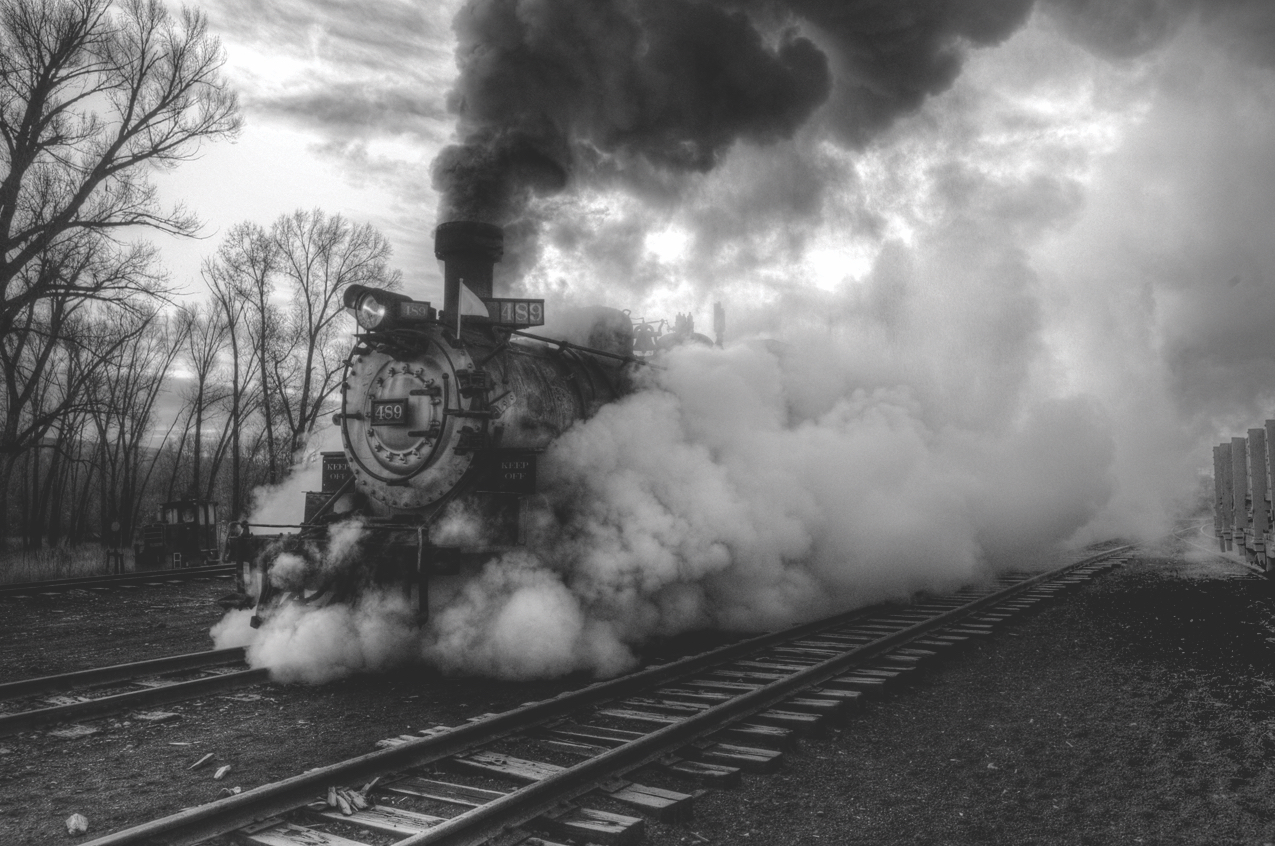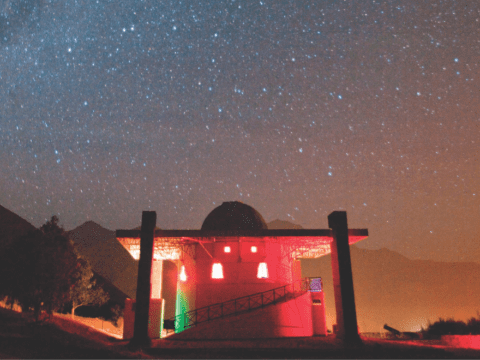Scientists know of just a handful of cases in the Earth’s four-billion-year-plus history when a single incident set in motion a chain of events that changed everything. These rare events are like hinges, swinging one phase of the world’s geology irretrievably into the next, affecting the whole planet rather than just parts of it. The events they trigger are so dramatic that they are visible in the Earth’s crust, laid down in layers that lie in wait to be deciphered.
One of these hinges occurred 2.5 billion years ago, when a few cyanobacteria floating in the primordial ocean figured out how to convert the sun’s light into food, belching oxygen as a byproduct into the atmosphere. That led to the evolution of a planet full of creatures that need oxygen to survive, including us. Another moment occurred 65 million years ago when an asteroid hit what is now ocean floor off the coast of Mexico, launching the die-off of the dinosaurs — and ushering in prime time for mammals.
Then there was the split second in 1755 when Josiah Hornblower, a British engineer lured to the North American colonies to work in a copper mine, started up the first steam engine ever used in the Western Hemisphere. By making it pump water out of the deepest shaft in the New World, he vastly increased the amount of ore the mine could produce.
On the face of it, the feat doesn’t seem so spectacular. But Hornblower’s move can be seen as the beginning of America’s Industrial Revolution, the first moment of a new geological dynasty in the planet’s history, the hinge between the old and the new. In scientific circles, the epoch before was the Holocene. The moment after is our current one, the Anthropocene, a piece of the geological time scale as significant and remarkable as the Jurassic.
Stratigraphers, the notoriously conservative gatekeepers of the nomenclature of the planet’s geological layers, have already taken the first steps toward making the name change official. They don’t do that sort of thing lightly. Stratigraphers are “hard to impress,” as science writer Elizabeth Kolbert wrote in National Geographic in 2011. “They take the long view — the extremely long view — of events, only the most violent of which are likely to leave behind clear, lasting signals. It’s those events that mark the crucial episodes in the planet’s 4.5-billion-year story, the turning points that divide it into comprehensible chapters.”
New chapters mean changes have occurred in the Earth’s most fundamental characteristics. I have been on digs with scientists who can look at a piece of the Earth’s crust and point to the precise line between one time unit and the next, the lines marching upward through time.
Sometimes, the obvious difference is which creatures remain embedded in the layer as fossils: present in one layer, missing in the next. Sometimes, it’s the chemical makeup of the atoms in the fossils. In the case of the epoch when the dinosaurs died out, for example, fossils at the line bear traces of compounds that could only have come from space, sprayed across the planet’s entire surface at the moment of the asteroid’s impact.
While the Jurassic is named after the Jura section of the European Alps, famed for its deposits of limestone dating to that time in the Earth’s history, the Anthropocene is named after a single species: us. It translates as “the new age of man” and is evidence of the growing scientific recognition of how irrevocably we have changed things here on Earth, a drama fated to play out over millions of years to come.
***
How did a single act 259 years ago trigger change on a planetary scale? The answer revolves around chemistry. Hornblower’s use of the steam engine prophesied massive changes to the planet’s balance of carbon, one of the building blocks of life. While a few similar steam engines were in use in Britain before 1755, Hornblower’s pumper foreshadowed the Industrial Revolution, which used energy from burning fossilized ancient creatures — coal, oil and gas — to run machines. As it burned, carbon stored in the fossils flooded into the atmosphere as gas, where it mixed with oxygen and collected there to make carbon dioxide. Some of that gas dissolved into the ocean, molecule by molecule across the vast membrane at the surface of the sea, turning to carbonic acid.
It may sound benign.
But so many engines have used so much fossil fuel since 1755, and so much carbon dioxide has oozed forth, that the basic composition of air and water has changed. As the blue-chip group of geologists assessing the Anthropocene have noted, the chemistry of the air and the water is fundamentally different now than it has been for tens of millions of years. Today, just four or five lifetimes since Hornblower started up his pump in the New World, the carbon dioxide concentration in the atmosphere is the highest it’s been in at least 20 million years. The ocean is more acidic than it’s been in 55 million years.
Even geologists are surprised at the scale and pace of the changes. Normally, they assess the long-ago impacts of frenzied volcanoes, huge meteorites, tectonic plates ripping apart or continents crashing into one another — effects that kick in over tens, hundreds, thousands or millions of years. When the idea first emerged that humans could have as measurable an effect on the planet as those catastrophic events — possibly over mere centuries — it was considered absurd, notes Jan Zalasiewicz, stratigrapher at the University of Leicester in Britain and a leader in the movement to officially name the Anthropocene.
Geologists knew that the obvious signs of humans’ reign — superhighways and skyscrapers, massive cities, vast forests cut down to make farmland — would leave little permanent mark on the planet: these would be swallowed up by time. But when they looked instead to the invisible — to molecules of air and water — they realized that something enormous was afoot. Humans were making a planetary record that would last until Earth itself had vanished.
“However these debates will unfold, the Anthropocene represents a new phase in the history of both humankind and of the Earth, when natural forces and human forces became intertwined, so that the fate of one determines the fate of the other,” Zalasiewicz and others write in a key academic paper in 2010. “Geologically, this is a remarkable episode in the history of this planet.”
***
Ground zero of the Anthropocene, 1755, was almost unimaginably different from today. The idea that the world could change, or that it had changed many times and that those changes could show up in layers in the Earth’s crust, was unimaginable. Most scientists, engineers and theologians — many of whom were the same people — thought the world was immutable. They believed that God laid down everything that could ever be needed in a single burst of creativity. It wasn’t until 1813 that the French naturalist Georges Cuvier established extinction as a scientific fact. The idea that creatures evolved one from the other would emerge in 1859 when Charles Darwin published On the Origin of Species.
Science was in its infancy in 1755 when it came to the chemistry of the atmosphere and ocean. That was the year the British chemist Joseph Black published his findings on the existence of carbon dioxide. He called it “fixed air” and found it by heating limestone, made from the fossils of ancient plankton. The idea that the gas was a player in the composition of the atmosphere and that its proportion could change and affect the planet’s creatures was inconceivable. That particular discovery would have to wait for the Swedish physical chemist Svante Arrhenius in 1896.
At the start of the Anthropocene, bacteria and viruses were unknown as agents of disease, and would remain unknown for another century. Doctors believed illness was caused by noxious fumes — or moral failings. Malaria, for example, was named after the Italian words for “bad air.” When epidemics of cholera and typhoid struck, as they did with a vengeance through the 18th century as industrialization crowded citizens into cities, physicians were helpless. Life expectancy was poor; in London, roughly 75 percent of children died before reaching adulthood. The global population was less than 800 million, just a little more than Europe’s population today. Our current world population is more than seven billion.
Then, global industry was still run largely by muscle power, whether human or animal. In the New World, it came from the sweat of slaves who had been shipped across the Atlantic Ocean from Africa — and that slave trade was a big part of the British economy for another half-century.
Railways and steamships were unknown in 1755. The internal combustion engine was eight decades away. In Britain, governments and private industries spent fortunes trying to connect different parts of the country by canal, an innovation designed to replace freight-carrying packhorses. Coal production was a global blip, amounting to less than six million tonnes in 1755. Today, the world produces 7,831 million tonnes of coal a year, in addition to the gas and oil unimaginable in 1755. Banking, an industry worth US$143 trillion this year, was still in its infancy in 1755, with just a handful of private banks in existence anywhere.
The textile industry, another cornerstone of Britain’s economy, took place in cottages, run by women and children who spun and wove by hand. And what a textile industry it was! Wealthy women of the day fought with wide-hooped handmade skirts that prevented them from sitting down. Both rich and poor wore boned stays with shoulder straps to keep their backs straight, chests jutted and waists narrow. Petticoats were de rigueur. Men wore collared jackets, waistcoats and knee-length breaches with white stockings. The rich ones sported wigs or powdered their hair, tying it at the back with black ribbons. Steam-powered textile factories, key drivers of the new economy and iconic images of the Industrial Revolution, were decades away.
In 1755, Lisbon (capital of the shipping powerhouse Portugal) was destroyed by a massive earthquake and tsunami that also killed as many as 90,000. Australia’s east coast was 15 years away from being glimpsed by James Cooke, a sighting that sparked the colonization of the last inhabitable continent. Britain and France were at war in the New World. The siege of Quebec was on the horizon, and General James Wolfe was only four years away from his death on the Plains of Abraham, as the British took control of what would later become Canada.
North American colonies further south chafed under Britain’s control in 1755. Twenty-one years on, they signed the Declaration of Independence and formed the United States. In fact, in 1994, Belleville, N.J., the town where Hornblower assembled his historic steam engine, was formally designated the “birthplace of the American Industrial Revolution” by the U.S. Congress. No such institution existed when the machine started pumping in 1755. Today, thanks to all that fossil-based power, the United States is the leading economic engine on the planet. Its economy alone is responsible for nearly a third of the excess carbon dioxide that has accumulated in the atmosphere and ocean — three times more than any other nation.
***
What will the Anthropocene look like in the fossil records of the future Earth? This is the biggest question of all. Partly it depends on exactly which moment stratigraphers choose for the beginning of the new geologic chapter, now a juicy subject of debate. One possibility is a few years before Hornblower set up his pump, say 1750, which the history books point to as a conceptual start to the Industrial Revolution. Perhaps it will be even further back, to the beginning of agriculture when the planet’s ability to absorb carbon dioxide in forests and grasses began to be slightly impaired. Or perhaps they will push the date forward to 1800, when the Industrial Revolution was in full swing, or even further to when the first nuclear bomb exploded in 1945, marking the planet’s crust forever with radioactivity.
One thing is sure: the pace is picking up. Geologists have begun calling the period after the Second World War the “Great Acceleration” of the second phase of the Anthropocene. That’s because global industrialization accelerated and the accumulation of carbon dioxide in the atmosphere started to climb far more quickly after 1945. In the first 200 years of the Anthropocene, the carbon load in the atmosphere rose by 12 percent. Since the 1950s alone, it’s risen another 30 percent.
Stratigraphers expect their future colleagues to see more than just changes in carbon and other chemical elements in the future fossil record. They expect future rocks to show how human activity has wrought changes in sea level and changes in the critical depth at which carbon-based shells can form in the ocean. They anticipate evidence of violent storms lashing the coasts, and shifts in the atomic structure of molecules in dead plants and animals. Of course, future readers of the Earth will find traces of the creatures plunged into extinction by the even more dramatic changes to come as the planet’s carbon load keeps growing. Scientifically speaking, humans could be one of those species that goes extinct in the high-carbon world we’ve created. Like the dinosaurs, we would show up as fossils for a while and then vanish, leaving our imprint on the planet’s chemical record.
Some paleontologists have returned to the fossil record to check out what happened the last time carbon entered the atmosphere so quickly and in such high volumes. It turns out, there haven’t been any other times. All those angry volcanoes, restless tectonic plates, quarrelling continents, free-fall asteroids — none of them put carbon into the atmosphere as fast as Homo sapiens has been doing since Hornblower lit a fire under his steam engine in 1755.
The closest we’ve come is the Permian extinction from 252 million years ago, known in the scientific literature as the Great Dying because it was the deepest of the planet’s five mass extinctions. It was caused by sustained volcanic activity that created the Siberian Traps. Fully 95 percent of species died out completely, both on land and in the sea.
And we’re even better at putting carbon into the atmosphere than those volcanoes.
Perhaps there’s another possibility, one that geologists, so attuned to the past, can’t foresee. What if the Anthropocene, already a discernable layer in the planet’s archive, ends up being very thin? What if our species turns its back on fossils to fuel our economy, stops pumping carbon dioxide into the atmosphere and nudges the planet into yet another new geologic dynasty that will let us live on?
What could cause that hinge to swing?
***
This story first appeared in The United Church Observer’s January 2014 issue with the title “The epoch we have wrought.”














